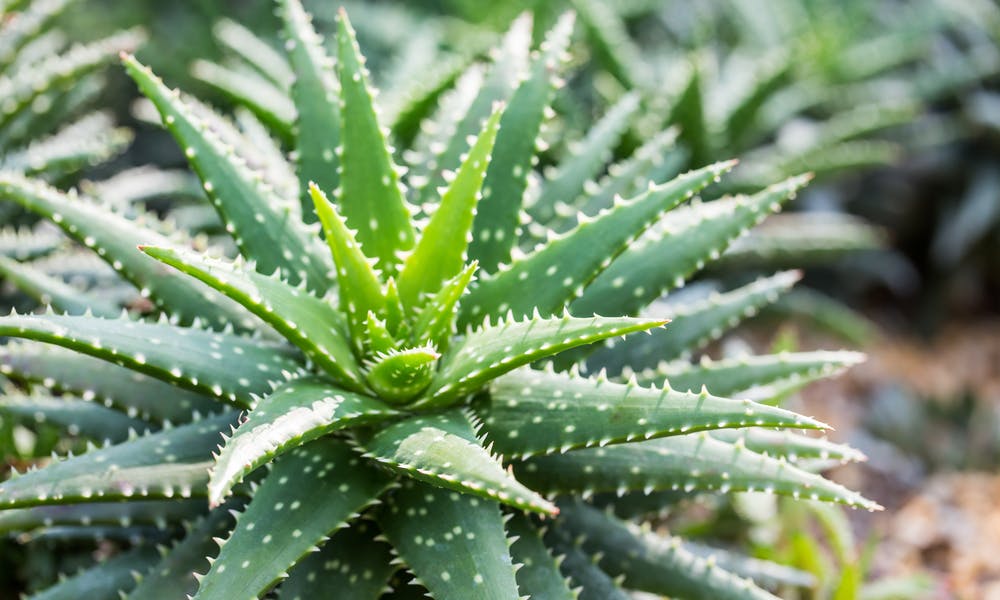Aloe Vera is a species of aloe of uncertain origin but cultivated for a long time in the Mediterranean region, North Africa, and the Canary Islands. This beautiful plant has been adopted in traditional medicine in many regions of the world: First in Europe, the Middle East, and North Africa, then India, China and mainly in Asia after the 10th century and America after the 17th century. Currently, aloe gel is mainly used in the composition of cosmetics or drinks.
As an indoor plant with a thousand virtues, Aloe Vera is both easy to maintain and has a nice decorative aspect. Renowned for its healing medicinal properties, it is regularly used in cosmetics. Its foliage, as elegant as it is original, is particularly heat resistant. This plant is tenacious but still, it is at risk. Whether you raise it inside your house in winter, or outside in summer, knowing how to take care of it requires a certain skill.
In this article, we are going to discuss the following points:
* What Is the Best Environment for This Plant?
* Most Common Diseases That Touch the Aloe Vera Plant
* A Few Precautions to Take Care of Your Plant
* How to Protect the Aloe Vera in Winter?
What Is the Best Environment for This Plant?
Aloe vera should grow in a large and shallow pot. Very small or too heavy ones are not recommended, as it gets harder to move them around. It must be in a porous and nutritious ground, it is thus advised to introduce in the pot a little soil with sand. The roots of this type of plant do not support contact with water, for this reason, they require soil with easy and rapid drainage.
We advise you to water your aloe vera every 15 or 20 days, using little water and pouring directly on the ground, without leaving the pot filled. Keep in mind that if you exceed the recommended amount of water, your plant could rot. On the other hand, if you notice that some leaves are very fine and wrinkled, it means that they are thirsty and need a little more water.
Most Common Diseases That Touch the Aloe Vera Plant
That plant has many main enemies; one of them is parasites called coccidia. They are small insects, easily spotted by the white floury cluster that appears on the leaves. Moreover, they are known for feeding on their sap and settle on the leaves. Therefore, white traces appear on its leaves and your aloe vera turns yellow as a sign of being sick.
To treat your plant, you should asphyxiate them by blotting the leaves with household alcohol and remove those that have faded to relieve it.
Root lice are noticed at the base of the plant because they suck to absorb the sap. The first signs are typically white spots, which stand out even on the inner sides of the pot. If you see one of these spots, you must water it with chemical or biological pesticides, and transplant your plant after cleaning the roots.
A Few Precautions to Take Care of Your Plant
Aloe vera grows in arid areas. Therefore, an excess of watering is to be avoided. You should also avoid the flowerpot holders so that the water does not stagnate.
Be aware that this plant is sensitive to a lack of water and can react to certain environmental causes. The disease from which it suffers the most is root rot.
If your aloe vera has a sad and sick appearance, you can revive it by changing its pot, after having removed all the soft or black roots. If your aloe vera seems to look flattened, its leaves have a serious slackness, and they hang squarely, it is most likely due to a lack of natural light. Ensure that the ambient temperature is above 20 degrees C, without direct exposure to avoid a sunburn.
How to Protect the Aloe Vera in Winter?
If you live in a cold area, you should protect your plant. The best solution is to take them in as soon as winter comes up. Find a bright room, whether it is a garage or a veranda where you can put your plant. You are going to quickly notice an improvement in your plant.
You must place them, according to their needs in the sun, near the windows so that they benefit the most. However, you should avoid putting them in contact with the glass because if the outside temperatures are very low the cold could be transmitted to the plant through the window. When you do not have enough space to place them inside, put them around your rooms. Only avoid leaving them near the ventilation ducts because they could dry up or at worst wilt.
Taking care of an aloe vera plant in your home, or even outside in your garden or on the balcony, is an easy task. With proper growing conditions and information on the care tips for aloe plants, you can easily grow it. It is very decorative with its original and elegant foliage and a very resistant plant. Furthermore, it got many other uses in traditional medicine and cosmetics products.
It particularly appreciates the warmth and enjoys the o utdoors in summer and indoors in winter. In addition to all of that, your aloe vera occasionally produces a large stem of small bell-shaped flowers. Once the flowers have wilted, you can cut the stem at the base. Best of all, aloe plants also produce new, smaller plants, perfect for propagation. Now that you know how to take care of an aloe vera plant, you should definitely take one home.
